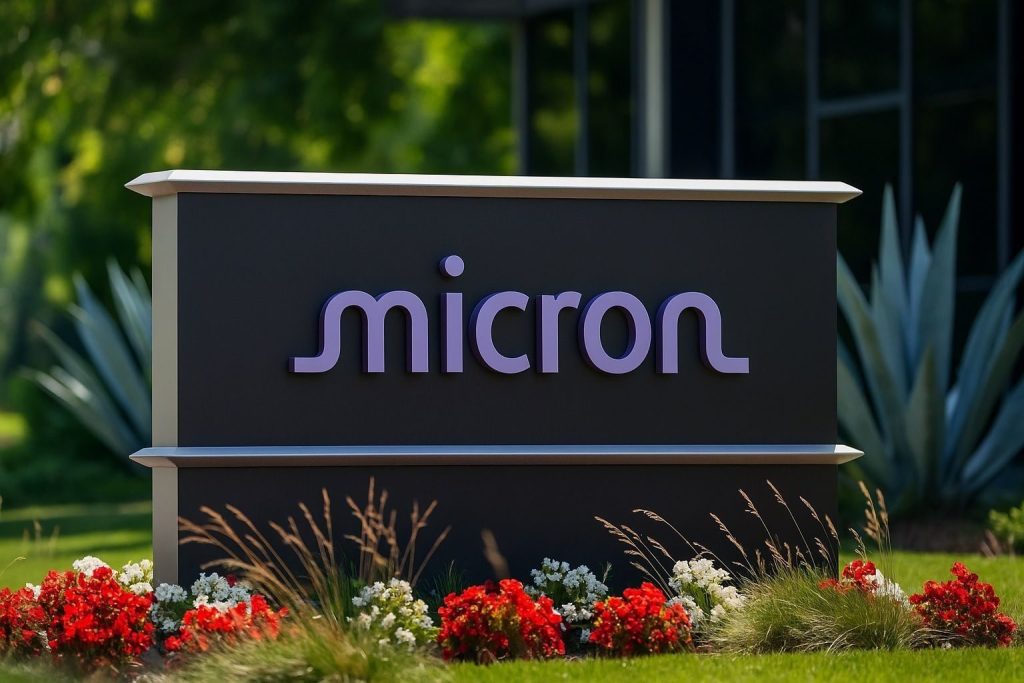Intel stock is trading firmer into Wall Street’s shortened Black Friday session as investors balance upbeat AI and PC momentum, heavy institutional inflows and an escalating trade‑secrets dispute with Taiwan Semiconductor Manufacturing Co. (TSMC). [1]
Intel Stock Price and Performance Snapshot for November 28, 2025
Because U.S. markets were closed for Thanksgiving on Thursday and open only for a half‑day today (closing 1 p.m. ET), most trading in Intel is clustered around the morning session. [2]
Key numbers as of this morning:
- Last regular-session close (Wed, Nov. 26): about $36.81 per share. [3]
- Recent pre‑market/early‑session trading today: MarketBeat’s Intel page shows extended-hours quotes around $37.37 shortly after 9 a.m. ET, roughly 1.5% above Wednesday’s close. [4]
- 52‑week range: roughly $17.67 – $42.48. [5]
- Market capitalization: about $175–176 billion. [6]
- 2025 performance: depending on the source and start date, Intel is up more than 80% year to date — TechStock² estimates a roughly 100% jump from about $19.70 at the start of 2025 to nearly $40 earlier this month, while Simply Wall St cites an 82% YTD gain. TechStock²+1
In other words, Intel stock today is trading near the upper half of its 52‑week range after one of the sharpest rebounds in big‑cap semiconductors in 2025.
Big-Money Flows: Norges Bank and Other Institutions Move the Needle
A major theme in today’s Intel news flow is heavy institutional activity revealed in fresh 13F‑style filings, many of which hit the tape this morning.
Norway’s Sovereign Wealth Fund Takes a Multi‑Billion Dollar Position
MarketBeat reports that Norges Bank Investment Management (Norway’s sovereign wealth fund) has initiated a new Intel position worth roughly $1.58 billion, representing more than 70 million shares of INTC. [7]
For a conservative, benchmark‑oriented investor of that scale to buy Intel in size is a strong signal that large global allocators are comfortable owning the stock after its huge 2025 run‑up.
PZU and Other Asset Managers Add to Intel
Another filing highlighted today shows General Pension Society PZU Joint Stock Co (a major Polish pension manager) increasing its Intel stake by 1.6% in Q2 to about 1.33 million shares, making Intel its third‑largest portfolio position at 8.3% of assets. [8]
Additional MarketBeat alerts this morning flag movements from a long list of institutions:
- Quadrature Capital Ltd opened a new Intel position of about 1.32 million shares, valued near $29.7 million, in the second quarter. [9]
- Russell Investments Group, the State Board of Administration of Florida Retirement System, and others disclosed fresh purchases or additions, while firms like Grantham Mayo Van Otterloo and Johnson Financial Group reported trims. [10]
Across these filings, MarketBeat calculates that around 64.5% of Intel’s shares are held by institutional investors and hedge funds, underscoring just how heavily owned the name now is in professional portfolios. [11]
For Intel stock today, the takeaway is that ownership is rotating — some active managers are harvesting gains, while sovereign funds and pensions are still willing to buy at current levels.
Legal Overhang: TSMC Trade‑Secrets Case and Taiwan Raid
The starkest risk headline around Intel this week is the TSMC trade‑secrets probe involving former TSMC senior vice president Wei‑Jen Lo, who re‑joined Intel in October.
What Happened?
- TSMC filed a lawsuit in Taiwan’s Intellectual Property and Commercial Court, accusing Lo of leaking sensitive chipmaking trade secrets to Intel and asserting there is a “high probability” he used or disclosed confidential information. [12]
- On Thursday, Taiwan prosecutors’ intellectual property branch said investigators raided two of Lo’s homes, seizing computers, USB drives and other evidence, and a court approved the seizure of his shares and real estate. [13]
- Prosecutors said Lo is suspected of violating Taiwan’s National Security Act, which raises the stakes beyond a standard corporate civil suit. [14]
Intel’s Response
Intel has strongly denied the allegations, saying that based on what it knows, it sees no merit in the claims and emphasising that it has strict controls against using third‑party confidential IP. Intel also publicly backed Lo, describing him as widely respected and framing talent movement between chip companies as normal for the industry. [15]
How Markets Are Treating the Risk
Despite the seriousness of a national‑security‑linked trade‑secrets probe, Intel shares are holding up relatively well. Benzinga notes that Intel’s momentum score in its internal rankings has actually improved this week as investors focus more on macro tailwinds and operational improvements than the legal drama. [16]
For Intel stock today, the key risk is that this dispute could:
- Evolve into lengthy cross‑border litigation,
- Draw regulatory scrutiny in multiple jurisdictions, or
- Restrict certain technology transfers between Intel and Asian partners.
At the same time, markets currently seem to be betting that either the case will be contained or Intel’s internal controls will protect it from the worst‑case outcomes.
Fundamentals: AI PCs, Client Computing Strength and Q3 2025 Results
Underneath the headlines, Intel’s recent operating performance remains central to the bull case.
Client Computing Group Shows New Life
A widely cited Zacks research note, echoed on European investor sites, highlights that Intel’s Client Computing Group (CCG) — essentially the PC‑focused business — delivered about an 8% revenue jump, helped by: [17]
- A PC upgrade cycle after years of under‑investment,
- Rising demand for “AI PCs” equipped with local acceleration, and
- Intel’s new processor launches in consumer and commercial segments.
That growth is particularly important because CCG has historically been Intel’s profit engine, funding its turnaround and foundry ambitions.
Q3 2025 Earnings Snapshot
Intel’s Q3 2025 results (quarter ended Sept. 27) show a company that is stabilising but not yet firing on all cylinders: [18]
- Revenue: about $13.65 billion, slightly ahead of analyst estimates near $13.1 billion.
- EPS: roughly $0.23 per share, with Intel still guiding for modest EPS (~$0.08) for Q4 2025 as heavy investments continue.
- Growth: quarterly revenue up around 3% year‑on‑year, reversing prior declines.
- Profitability: net margin remains very thin (around 0.4%), and return on equity is still negative, reflecting the cost of Intel’s manufacturing turnaround.
Intel’s own investor‑relations site underlines that the company is in the middle of a massive, capital‑intensive transformation to regain process leadership and scale its foundry business, with investors urged to pay close attention to multi‑year progress rather than single quarter swings. [19]
Sector Tailwinds: Chip Stabilisation and the AI Super‑Cycle
Today’s Intel stock action is also shaped by macro trends across semiconductors.
Chip Stocks Are Stabilising Into the Holidays
An FXEmpire forecast from Thursday notes that Nvidia, AMD and Intel are all finding support at key technical levels, with buyers stepping in on pullbacks and the broader chip sector sitting in a “mildly bullish consolidation.” [20]
This backdrop, combined with growing confidence that the Federal Reserve could deliver another rate cut in December, is supporting risk‑on sentiment in tech and AI‑exposed names — including Intel. [21]
GPU Market Growth and Intel’s Long-Term Role
A new U.S. GPU market research report released today projects that the U.S. GPU market could grow from about $19 billion in 2024 to over $136 billion by 2033, driven by gaming, AI and machine‑learning workloads. The study lists Intel alongside Nvidia and AMD as key participants in that growth. [22]
For Intel stock today, this reinforces the idea that even a modestly successful push into AI accelerators and GPUs could be material over the coming decade.
Future Tech: Intel’s Plan to “Enable 5kW GPUs”
In one of the more eye‑catching headlines today, UK tech site Overclock3D reports that Intel plans to present a talk at ISSCC 2026 titled “Integrated Voltage Regulator Solutions to Enable 5kW GPUs.” [23]
According to that report:
- Intel engineer Kaladhar Radhakrishnan will outline how integrated voltage regulators embedded in Intel’s packaging (part of its upcoming Foveros‑B technology) could support GPUs drawing up to 5,000 watts — more than 3.5× the power budget of Nvidia’s current Blackwell‑class AI GPUs. [24]
- The goal is to improve power‑delivery efficiency, potentially lowering data‑centre operating costs and making extreme‑performance AI accelerators economically viable. [25]
- Intel hopes this packaging innovation will make its foundry services more attractive to external customers, not just its own product lines. [26]
Investors shouldn’t read “5kW” as an imminent product spec, but the news does reinforce a key narrative: Intel is trying to leapfrog in packaging and power delivery, not just in traditional transistor scaling — a potentially significant differentiator in AI‑era chips.
Valuation Check: After an 80%+ Rally, Is Intel Stock Expensive?
Wall Street’s Rating: “Reduce” With Modest Downside
MarketBeat’s aggregation of analyst views paints a cautious picture: [27]
- Around 2 analysts rate Intel a Buy,
- 24 rate it a Hold,
- 8 rate it a Sell,
- Resulting in an overall “Reduce” consensus rating.
- The average 12‑month price target sits near $34.84, slightly below where the stock is trading today in the mid‑to‑high $30s.
In short, most covering analysts believe the easy money has been made in the 2025 rally and now see a more finely balanced risk/reward.
Simply Wall St: DCF Versus Sales-Based Fair Value
Simply Wall St released a detailed valuation piece today titled “Can Intel’s AI Chip Push Justify Its 82% Surge in 2025?” with two contrasting lenses: [28]
- Discounted Cash Flow (DCF):
- Uses Intel’s current negative free cash flow (around –$13.65B) and forecasts a turn to positive FCF by 2027, growing into the 2030s.
- The model arrives at an intrinsic value of about $14.88 per share, implying Intel is overvalued by roughly 147% on that DCF basis.
- Price‑to‑Sales (P/S) and “Fair Ratio”:
- Intel’s current P/S is ~3.3×, below both the peer average (~14×) and the broader semiconductor industry average (~4.6×).
- Simply Wall St’s proprietary “Fair Ratio” for Intel is 5.59×, which would actually make the shares look undervalued on a sales‑based metric.
They also present bull and bear valuation narratives:
- Bull case fair value: about $37.27, slightly above today’s price, assuming steady progress in AI and foundry execution.
- Bear case fair value: around $28.47, implying downside if execution stumbles and competition bites. [29]
Put together, these views underscore why Intel draws such mixed opinions: its earnings and cash flows are still depressed, but its revenue base, strategic position and AI optionality arguably justify a higher multiple than backward‑looking profitability suggests.
How Intel Stock News Today Fits the Bigger 2025 Story
Putting all of today’s November 28 headlines together, the Intel picture looks like this:
Bullish forces
- Strong 2025 share‑price recovery (80–100% YTD) and short‑term momentum, with Intel recently outperforming the S&P 500 over 12 months. TechStock²+2Simply Wall St+2
- Operational improvement, especially in Client Computing, where AI PC demand and a PC refresh cycle are helping lift revenue. [30]
- Heavy institutional interest, including Norges Bank, PZU and quant funds like Quadrature, signalling confidence from large, sophisticated investors. [31]
- A long‑term AI and GPU super‑cycle, in which Intel is investing aggressively in foundry services, AI accelerators and novel packaging (such as the 5kW‑class GPU power‑delivery tech). [32]
Bearish or cautionary forces
- The TSMC trade‑secrets probe, raids on a former TSMC exec now at Intel, and a potential national‑security legal dimension in Taiwan. Even with Intel’s strong denial, this is a material headline and reputational risk. [33]
- Thin margins and negative free cash flow today, as Intel spends heavily to catch up in manufacturing and scale its foundry business. [34]
- Valuation uncertainty, with DCF‑style models flagging substantial overvaluation, while sales‑based metrics and “narrative”‑style valuations look more forgiving. [35]
- Intense competition from Nvidia and AMD in data‑centre AI, CPUs and GPUs, plus the risk that execution missteps delay Intel’s turnaround. [36]
For market participants watching Intel stock today, the near‑term story is one of resilient price action despite legal noise, bolstered by big‑ticket buyers and improving PC business trends, against a backdrop of long‑duration, high‑risk investment in AI manufacturing and packaging.
What to Watch Next
Over the coming days and weeks, Intel investors will likely focus on:
- New developments in the TSMC/Lo case – any further legal filings, regulatory announcements or comments from Intel, TSMC or Taiwanese authorities. [37]
- Fed policy and December’s rate‑cut odds, which could drive flows into or out of long‑duration tech stocks like Intel. [38]
- Intel’s December 3 appearance at the UBS Global Technology and AI Conference, where management may provide additional colour on AI, foundry progress and capital spending. [39]
- Further institutional filings and analyst updates, especially if price targets are revised following the recent rally and legal headlines. [40]
Important Note
This article is for informational and news purposes only and does not constitute investment advice or a recommendation to buy or sell Intel or any other security. Markets move quickly; prices and probabilities mentioned here may have changed since publication. Always do your own research and consider speaking with a qualified financial adviser before making investment decisions.
References
1. www.marketbeat.com, 2. m.economictimes.com, 3. www.marketbeat.com, 4. www.marketbeat.com, 5. www.marketbeat.com, 6. www.marketbeat.com, 7. www.marketbeat.com, 8. www.marketbeat.com, 9. www.marketbeat.com, 10. www.marketbeat.com, 11. www.marketbeat.com, 12. www.reuters.com, 13. www.reuters.com, 14. www.reuters.com, 15. www.reuters.com, 16. www.benzinga.com, 17. proinvestor.com, 18. www.intc.com, 19. www.intc.com, 20. www.fxempire.com, 21. m.economictimes.com, 22. www.globenewswire.com, 23. overclock3d.net, 24. overclock3d.net, 25. overclock3d.net, 26. overclock3d.net, 27. www.marketbeat.com, 28. simplywall.st, 29. simplywall.st, 30. proinvestor.com, 31. www.marketbeat.com, 32. overclock3d.net, 33. www.reuters.com, 34. www.intc.com, 35. simplywall.st, 36. www.fxempire.com, 37. www.reuters.com, 38. m.economictimes.com, 39. www.intc.com, 40. www.marketbeat.com










